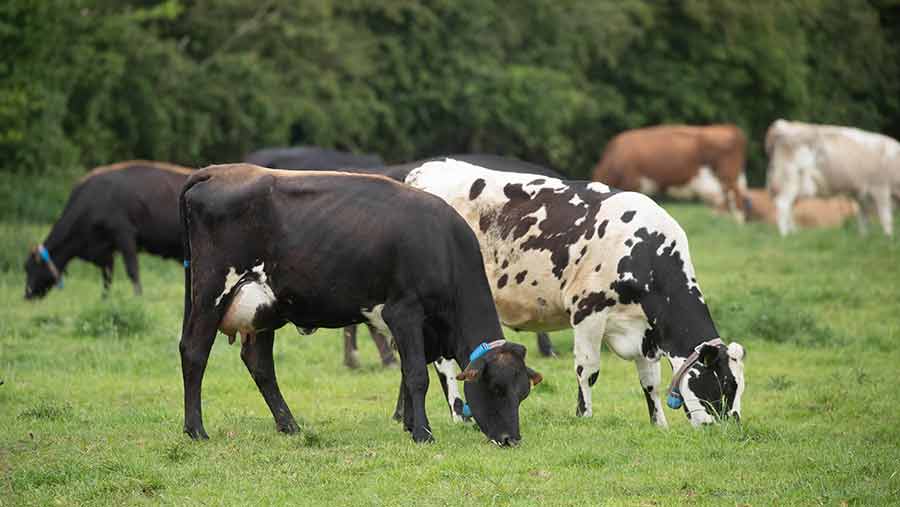First crossbred dairy genomic index launched
 © Tim Scrivener
© Tim Scrivener A collaborative project between four Scottish dairy farmers and Scotland’s Rural College has led to the launch of the first ever genomic index for crossbred cows.
The new Fast Breeder Index (FBI) is the result of the genotyping of almost 9,000 animals, led by geneticist Prof Mike Coffey from Scotland’s Rural College (SRUC) and based on data from four pasture-based dairy farms across south-west Scotland.
See also: How to use genomics to improve dairy economic performance
The aim of the project, which began in 2018, was to use the farm data to enable precision genomic selection of crossbred cows to maximise efficiency and health.
Speaking at the recent Dairy-Tech event (7 February), Mike said the lack of ability to get genomic breeding values has been a major barrier to implementing crossbred systems on farms.
Developing an SNP key
For the researchers and farmers to identify the top 25% of cows in each of the four herds (so they could be bred from), the first step of the project was to DNA-test all four herds to create an SNP key.
Prior to the project, this did not exist, he said, adding: “The SNP key is a phrase that’s used to describe the reference population of animals that have been genotyped and have good-quality phenotypes.
“We then compare all the phenotypes to the 50,000 SNPs on the genotype and create a prediction equation called the SNP key.
“That key is then used to predict the genomic breeding value of another – usually young – animal that has been genotyped but has no phenotypes yet.”
At £280,000, this was a costly process – but the development enabled the team to genotype all cows and calves across the farms, leading to the creation of the biggest SNP key for crossbred dairy cattle in the UK.
Practical application
The subsequent genomic index that has been produced is currently based on milk fat, protein and somatic cell count data. Liveweight and calving interval is expected to be added over the coming season.
The farmers have used the index to drive breeding decisions, with the heifers bred using the SNP key calving in February last year.
“This year will be the first that we can validate that the crossbred cows have performed according to the requirements that we set when we selected them to start with,” said Mike.
“Prior to the start of the project, the data showed that genetic improvement [on the farms] was somewhat erratic, but by being able to identify the best young animals and mate them to the best bull, improvements have begun to be made to milk quality and somatic cell count at farm level.”
The genetic mapping has also shown a rapid increase in cattle liveweight. “This is a big concern to farmers who graze their dairy cows extensively,” he said.
“Having access to the index means the four farmers will now be able to tailor breeding decisions to ensure liveweight does not go over the ideal of 500-525kg, without affecting yield, he added.
As a subsidiary to the project, the research team has also been able to develop a culling tool to help guide culling decisions based on genomics.
Next steps
The next stage of the project is to determine if, and how, genetics influence feed intake, emissions and disease such as Johne’s.
The four Fast Breeder farmers are now routinely using the index. Discussions with the AHDB are under way about how to make the key more widely available, potentially by the end of 2024, said Mike.
“Genetic improvement is a journey, and a long-term commitment. But with the basic framework now in place, other traits will be fairly straightforward to improve,” he said.
